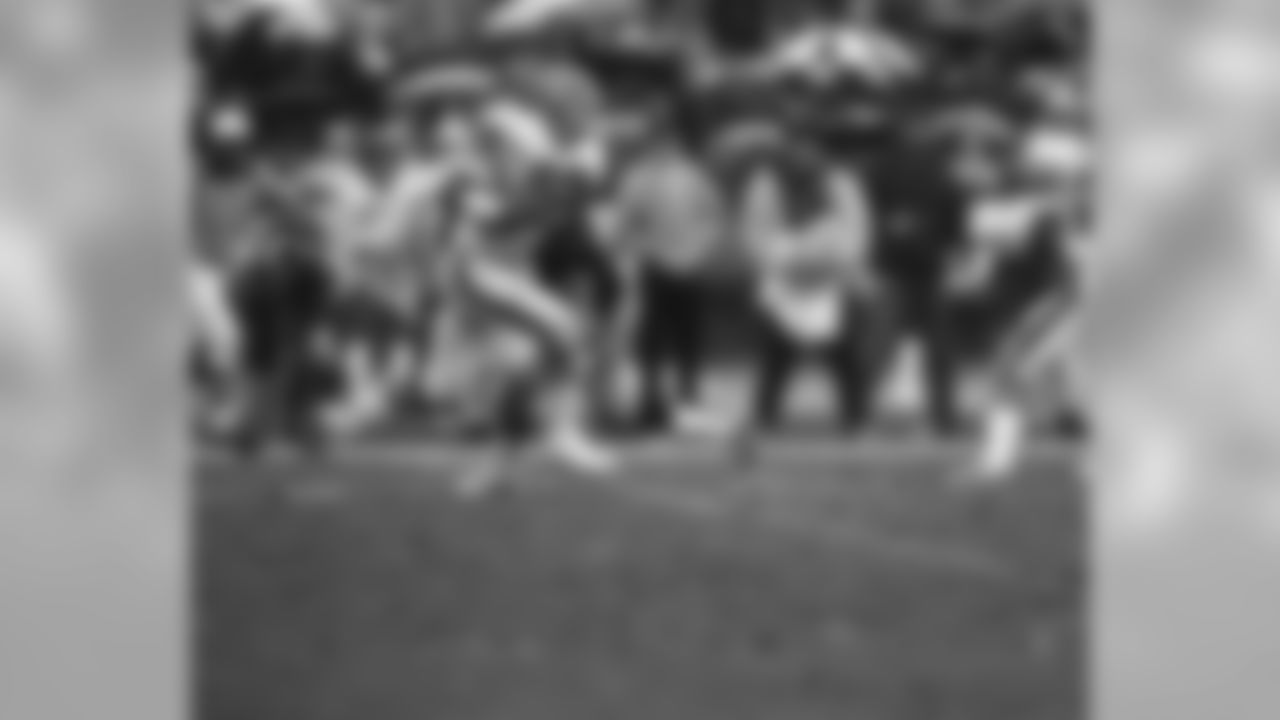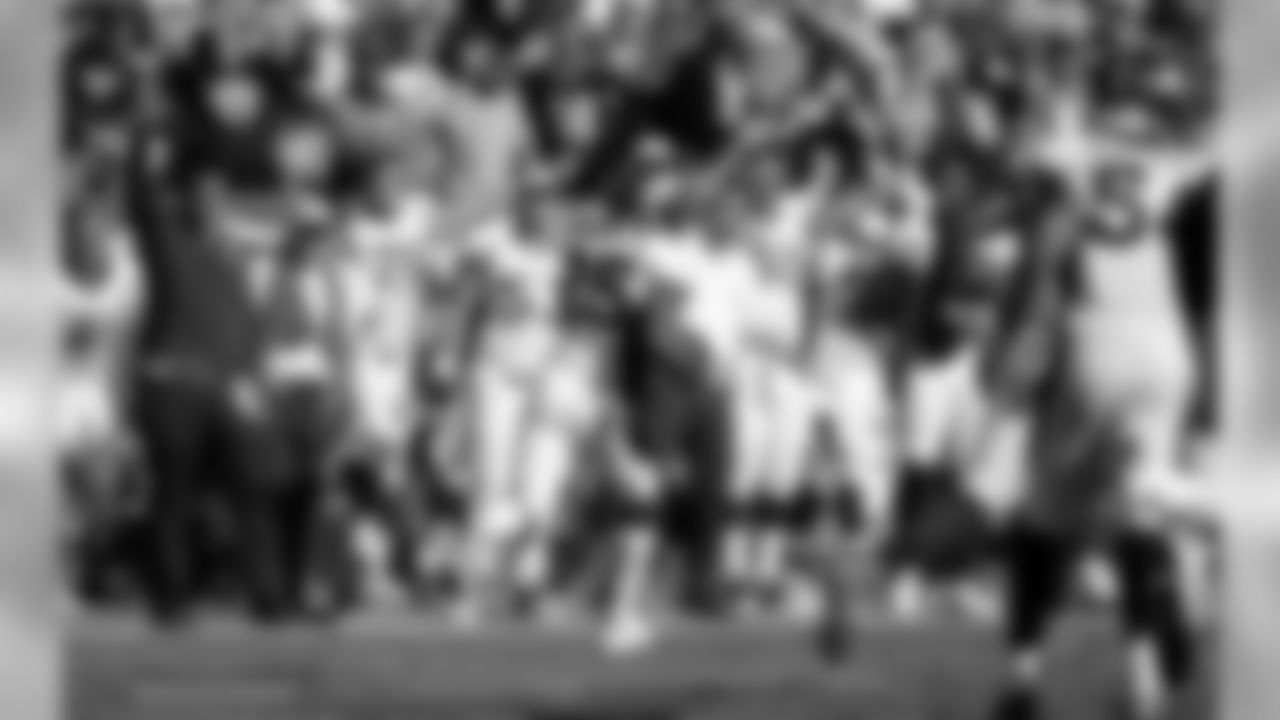Take a photographic trip through the series history between the Broncos and the Raiders.






1977 AFC Championship Game

1977 AFC Championship Game















In a thrilling game capped by a game-winning Jason Elam field goal as time expired, Ring of Fame RB Terrell Davis also scored the last touchdown of his career.


























One of the things I really enjoy about writing these columns for the web site is creating the opportunity for readers to drift back to the past, hopefully with the knowledge that the present was built there.
So this week we play the Oakland Raiders, and frankly, there are so many stories about so many unusual characters and personalities that I hardly knew where to go.
But there is an old journalistic adage that if something seems real big, pick out something small, but representative.
When Pro Football Hall of Fame coach and owner Al Davis owned the Raiders, he had some real characters working for him. And in some cases, one would wonder, "Where the heck did this guy come from?"
So was it with George Jones, and that will be the absolute last reference to him by his birth name.
For the Raiders, their fans, and opponents like me only knew him as "Run Run" Jones (also the last use of quotation marks referencing his name)
While most readers would never have heard of Run un, I assure you that if right this moment you brought his name up to Mike Shanahan or Jon Gruden, they would smile and chuckle, noting that of course they remember Run Run Jones.
He was with the Raiders for 43 years, and given the fact that Al Davis moved "upstairs" on game day after his head coaching stint, Run Run Jones spent more time on the sideline tat any other Raider in team history.
Who the heck was Run Run Jones and why does he matter?
He was a clubhouse assistant for the Raiders, and he matters because, as fictional detective Harry Bosch often says, "Everybody matters or nobody matters."
Run Run was one of the game's great background characters, and he came into pro football not from some football factory university, nor from a smaller school in a remote location, but from the school of hard knocks and professional roller derby.
Run Run might just be the only person to go from roller derby to professional football and have an extended run, no pun intended, in both.
Born in 1928, he served in the United States Navy during the Korean War (those who were there emphasize that it was a war, not a conflict), where he was captured and became a prisoner of war.
As Jones often recalled to reporters over the years, "I never knew if I would be alive from one day to the next. If they decided to shoot you, that was it. I was scared to death."
He did not get his nickname until after the war. Jones returned to his beloved West Coast and drifted professionally eventually drifting into the wild and crazy world of professional roller derby in the 1950's, a Golden Age that for the first time was marrying sports with live television.
The market was hungry, the postwar population was interested, and the San Francisco Bay Area Bombers were born.
Among many, I remember them well.
Their unquestioned star, and I can see her flashing around the tracks in my mind's eye right now, was Joan "Joanie" Weston, the "Blonde Bomber," the "Golden Girl" or roller derby. You either never heard of her, or you can never forget her.
Joanie Weston did a full two decades in roller derby, but skating on the same team for 18 years was Run Run Jones, and roller derby was where he got the nickname that would last him a lifetime.
"It was because I could actually run on my skates. Not too many could do it," Run Run recalled to the press.
In 1963 he and Al Davis both joined the Raiders, with Davis in a far more official capacity. The thing with some of these Raider characters is that sometimes they just showed up, and if Davis deemed their work ethic and loyalty to be at his acceptable level, they became fixtures with the franchise.
So for 43 years Run Run did everything and anything that anyone asked on the sideline or in the clubhouse.
Fresh towels? Run Run will get them.
Pick someone up at the airport? Run Run will do it.
Pull the net up on field goal or extra point attempts? Run Run will get over there first.
And he got over there first because he only did things at just one speed.
Run Run ran ran.
That was where I met him, pulling the net up for a kicking attempt, and he greeted me with, "How you doing, handsome?" I later found that he said that dozens of times every day, to virtually everyone he encountered.
Sometimes these stories about off-the-wall personalities reveal they to be a little off beat in terms of mainstream society, but Run Run had a normal life in every way.
He had a true family life and was proudest of his children, whom he would speak of at the drop of a hat--if he was not running somewhere.
His greatest source of pride was his children, and his three Super Bowl rings given to him by Davis after each of the Raider victories. He loved his Super Bowl rings and would always wear one, and sometimes all three at once.
Not only was he in all likelihood the only 18-year veteran of roller derby tracks who also prowled NFL (and of course, AFL) sidelines for 43 years, but history records him as a fixture at both.
Other than at home with his family, Run Run Jones died at the only other place he was regularly found, at the Raiders' facility in December of 2006. He was 77 and worked the Raider sidelines until the end.
A great friend once told me that the best thing a guy could hope for is to have a good run doing something he loves.
Run Run Jones had this in spades, in family, roller derby and pro football, and he had the nickname as well.













